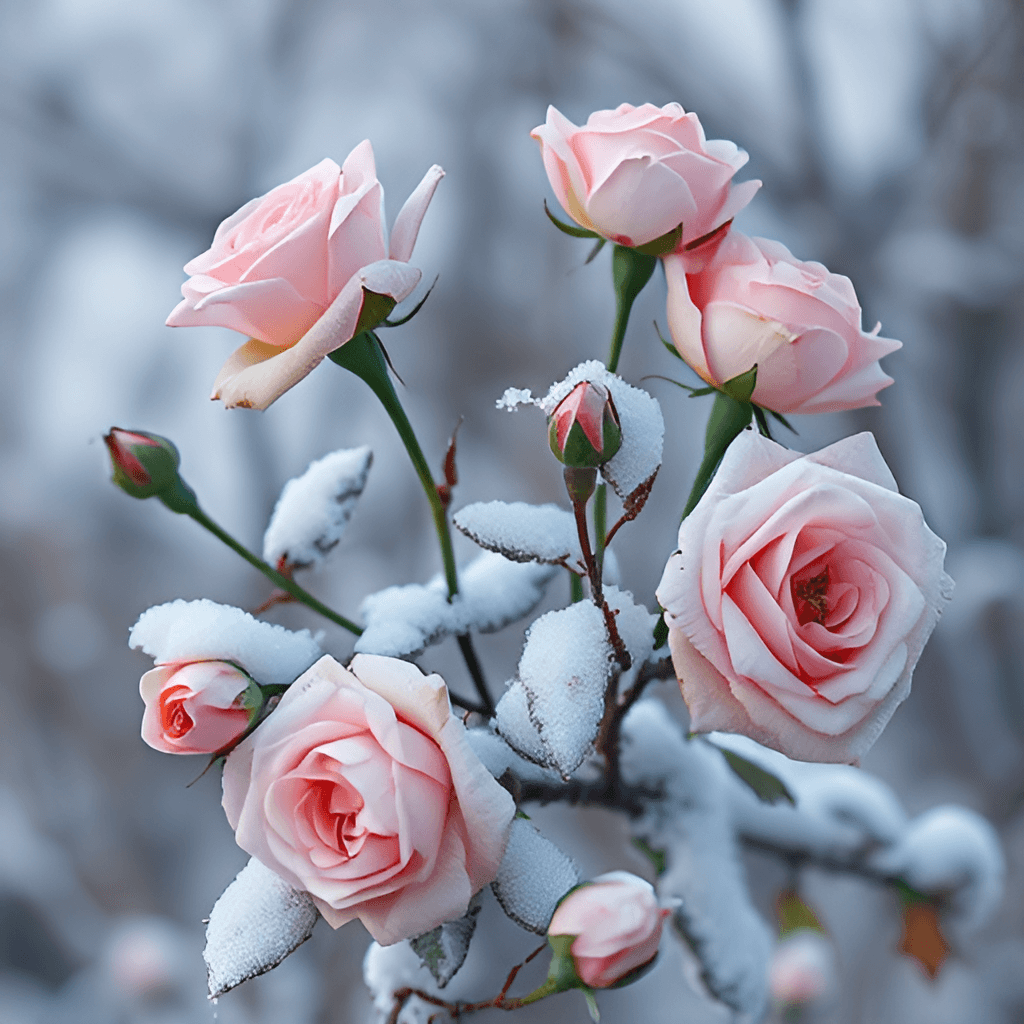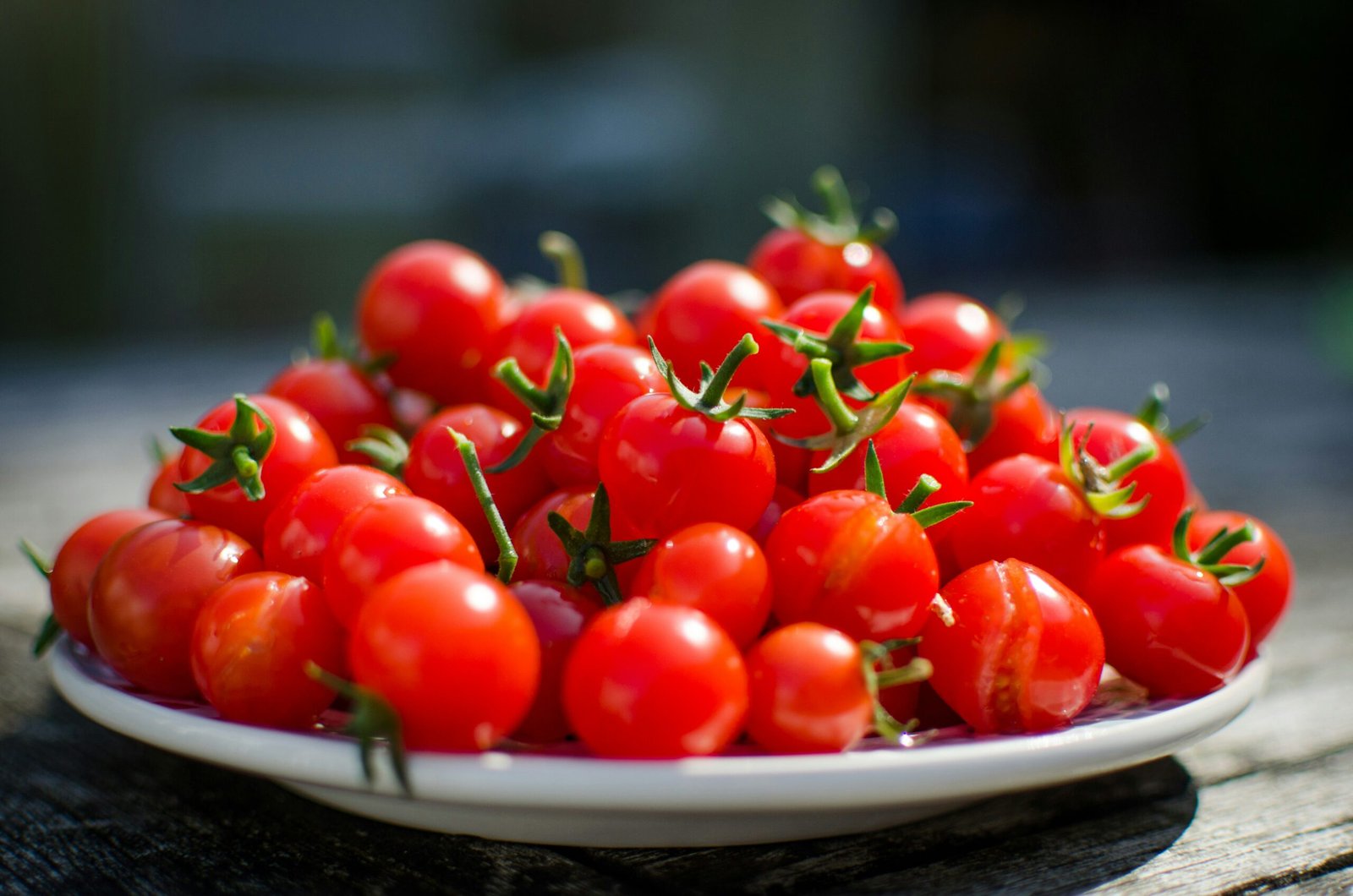Explore the enchanting world of winter roses and learn how to successfully plant and care for them during the colder months. Discover tips on selecting hardy rose varieties, preparing garden beds, and overcoming common challenges faced by winter gardeners. With the right techniques and proper care, you can transform your desolate winter landscape into a vibrant tapestry of blooms by spring. Join our gardening community as we share experiences, challenges, and successes in cultivating these resilient beauties amidst frosty conditions. Whether you’re a novice or an experienced gardener, this guide offers valuable insights to help you thrive in winter gardening.
The Beauty of Winter Roses
Winter gardening often conjures images of barren landscapes and frosty air, yet one might be surprised by the enchanting beauty of winter roses. The allure of planting roses in winter not only transforms a desolate garden into a vibrant tapestry but also offers the gardener a unique set of challenges and rewards. Roses have the remarkable ability to endure harsh conditions and emerge as splendid blooms, even amidst the cold.

Planting roses during the winter season allows for several advantages. One of the most notable benefits is that winter planting typically promotes root establishment before the onset of spring growth. This means that as the temperatures rise and the days lengthen, the roses are poised to flourish, often resulting in lush blooms earlier in the season. Furthermore, winter roses can contribute to the overall landscape by providing color and charm during the dreary months. Their vibrant petals, which can contrast beautifully with the snow or bare branches, can create a captivating visual display.
Please, read our post and do not forget to check our YouTube channel “Grig Stamate”:
https://www.youtube.com/@GrigStamate
You will find there, thousands of designing, furnishing, and decorating ideas for your home interior and outdoors.
Allow me to mention one of them:
Beautiful Succulent Garden Arrangements (2) | OUTDOOR DECOR & LANDSCAPING IDEAS #14 (video)
Of course, winter gardening does come with its own set of considerations. Potential challenges include extreme temperatures, frost, and the risk of disease due to moisture retention in colder climates. However, by selecting the right varieties of roses and employing proper planting techniques, gardeners can mitigate these risks. For instance, choosing hardy rose varieties that are well-suited for colder climates can ensure success. My own gardening experiences have taught me that preparing the planting site, including amending the soil and providing adequate mulch, plays a crucial role in the survival and growth of winter-planted roses.
In the upcoming sections of this blog post, we will explore further techniques and tips to ensure that your winter roses thrive, bringing beauty and joy to your winter garden. The sight of blooming roses amidst a snowy landscape is not merely a dream—it’s an attainable reality for those willing to embrace the challenges of winter gardening.
Choosing the Right Rose Varieties
Selecting the appropriate rose varieties for winter planting is essential for ensuring a successful bloom in the spring. Hardy roses, often referred to as winter-resistant or cold-hardy roses, are specifically bred to endure cold temperatures and to thrive in challenging climates. These varieties are ideal for gardeners in regions where winter temperatures can plummet.
Some of the most popular winter-hardy rose types include the ‘Knock Out’ series, which is well-known for its disease resistance and continuous blooms throughout the growing season. Another excellent option is the ‘Explorer’ series, developed in Canada, featuring robust varieties such as ‘William Baffin’, renowned for its ability to withstand harsh winter conditions while showcasing beautiful pink flowers. Similarly, the ‘Rugosa’ roses are appreciated for their hardiness and their aromatic hips, which attract wildlife and provide visual interest even in the colder months.
When choosing rose varieties, it’s also critical to consider your specific climate conditions. For gardeners in warmer regions, species such as the ‘Floribunda’ or ‘Hybrid Tea’ roses may work well, but they are less resilient to severe frost compared to the aforementioned hardy types. Additionally, roses like ‘David Austin’ varieties offer exquisite blooms and a delightful fragrance, providing options that can enhance the aesthetic of any garden.
To foster a sense of community, we invite our readers to share their favorite winter-planted rose varieties in the comments section. Engaging in discussions about personal experiences not only enriches our understanding of these plants but also helps fellow gardeners make informed choices when selecting their own roses. By choosing the right varieties, gardeners can enjoy resilient and beautiful roses even in the coldest months of the year.
Preparing Your Garden Beds
To achieve a flourishing rose garden planted during the winter months, proper preparation of your garden beds is crucial. Begin by assessing the area where you plan to plant your roses. Choose a location that receives at least six hours of sunlight daily, as this will provide the ideal conditions for growth. Next, it’s important to clear the selected bed of any debris, weeds, and old plant material. This helps to minimize potential disease and pest problems.
Soil preparation is one of the most vital steps in creating a nurturing environment for your roses. Start by loosening the soil to a depth of at least 12 inches. This can be achieved using a garden fork or rototiller, which aids in aeration and helps roots establish. After breaking up heavy or compacted soil, consider testing its pH level. Roses thrive in slightly acidic soil, with a pH ranging from 6.0 to 6.8. If necessary, you can amend your soil by adding lime to increase pH or sulfur to decrease it.
Incorporating organic matter such as compost or well-rotted manure enhances the soil’s fertility and drainage. A recommendation is to blend in about two to three inches of organic matter throughout the top layers of your garden bed. Furthermore, it is beneficial to check the moisture level of the soil before planting; it should be neither too dry nor overly saturated, striking the right balance is essential for rose survival during colder seasons.
Lastly, gather essential tools for your gardening venture, including a spade, hoe, and watering can. These instruments are invaluable for planting and ongoing maintenance. Interestingly, I once attempted using a hoe to mix in compost but ended up flinging soil everywhere, much to my neighbor’s amusement. Despite the mishap, it highlighted the importance of patience and attention during garden preparation. With careful planning and preparation, your winter-planted roses can thrive beautifully come springtime.
Winter Planting Techniques
Successfully planting roses during the winter months requires attention to detail and a few specific techniques that cater to the unique challenges posed by the season. To start, select the right variety of roses that are hardy enough to endure the cold climate. When choosing your rose bushes, look for varieties that are specifically bred for winter resilience. This foundational step ensures that your plants will have the best chance of thriving in the long run.
Before planting, it is essential to prepare the soil properly. Choose a location that enjoys good drainage and receives ample sunlight during the day. Dig a hole that is twice as wide as the root ball of the rose but no deeper than the root itself. This technique prevents the roots from sitting in water, which can lead to rot, a common issue in winter planting.
Once the hole is ready, fill it with a mixture of soil and compost. This will provide the necessary nutrients that the roses need to establish themselves quickly as they emerge from dormancy in spring. Place the root ball in the center, ensuring the graft union, where the rose variety meets the rootstock, is slightly above soil level. This positioning allows for proper water absorption and growth.
After setting the rose in the prepared hole, backfill with the remaining soil and compost mixture. Water thoroughly to settle the soil around the roots. As an added precaution, applying a layer of mulch helps insulate the plant against harsh winter temperatures while retaining moisture. Personal experiences reveal that taking this extra step often pays off, as it fosters a protective barrier against frost.
I encourage readers to share their planting techniques and experiences as well. Whether it’s tips on soil composition or methods to protect young plants from the cold, your insights may provide valuable information for fellow gardeners. The collaborative spirit can enrich our understanding of winter rose planting and enhance overall gardening success.
Caring for Your Roses in Winter
Winter can be a challenging season for rose enthusiasts, as the harsh weather conditions can significantly impact the health and vitality of these beautiful plants. Understanding how to care for your roses during the winter months is vital for ensuring their success come spring. One of the primary considerations is the watering technique. It is essential to provide your roses with adequate moisture without overwatering, as frozen soil can prevent water absorption. Watering should be done when the soil is not frozen, and a deeper, less frequent watering schedule is advisable to encourage root establishment.
Another critical aspect of winter care for roses is mulching. Applying a good layer of mulch around the base of your roses helps to insulate the roots against freezing temperatures. Organic materials such as wood chips or straw not only provide warmth but also help retain soil moisture, which is crucial in preventing the roots from drying out. Avoid piling mulch against the stems of the roses, as this can promote rot. Instead, create a barrier that protects while allowing air circulation.
Monitor your roses throughout the season for any signs of distress. If winter temperatures dip dramatically, consider additional protection such as burlap wraps or frost blankets. Remember to remove the coverings during warmer days to prevent heat buildup and encourage proper airflow. It’s also essential to restrict pruning until the danger of severe frost has subsided, as this can lead to further stress on the plants.
Ultimately, taking the time to carefully manage the winter care of your roses will lay a strong foundation for a thriving garden. Be sure to keep an eye on the conditions and adjust your techniques as necessary to support the health of your roses during these colder months. A little attention can go a long way in ensuring your roses emerge healthy and vibrant in the bloom of spring.
Common Challenges and How to Overcome Them
Gardening with roses planted in winter can be rewarding, but it comes with its set of challenges. Understanding these common issues is essential for any gardener who wishes to enjoy a flourishing rose garden despite the frosty conditions. One frequent challenge faced is frost damage. Newly planted roses are particularly susceptible to harsh winter temperatures, which can lead to wilted and broken stems, or even complete plant death. To mitigate this, gardeners should consider using protective coverings such as burlap or frost cloth. Mulching around the base of the plants with straw or wood chips can also provide insulation against freezing temperatures.
Pests present another concern for winter roses. While insects may seemingly disappear during colder months, pests like aphids and spider mites can still find ways to survive and can wreak havoc on vulnerable plants. When spring arrives, they may emerge in greater numbers, causing extensive damage. A practical solution is to inspect roses regularly throughout winter and to apply dormant oil sprays if pests are detected. This preventive measure can effectively suffocate syrupy infestations before they develop into a larger problem.
Additionally, overwatering is a common mistake during the colder months. Many gardeners unexpectedly drown their roses, mistakenly believing that winter rain or snowfall is adequate hydration. In reality, the roots of winter-planted roses need far less water when dormant. To avoid this, ensure that the soil is well-drained and only water when the top layer feels dry to the touch. Lastly, keeping a gardening journal may help you track seasonal changes and specific plant responses, providing insights into how to adapt and respond effectively to challenges as they arise. Remember, you are not alone in this journey; every gardener encounters obstacles, and with persistence, the rewards are substantial.
Tips for Successful Growth
Planting roses in winter can lead to a vibrant and flourishing garden come springtime, but success relies on several important factors. First, it’s essential to ensure that your roses receive adequate nutrition through proper fertilization. A well-balanced fertilizer formulated specifically for roses can provide the necessary nutrients to support root development during the colder months. Applying a slow-release fertilizer in late winter can prepare the plants for the vigorous growth they will experience when warmer weather arrives.
Another critical aspect of successful rose growth is sunlight. Roses thrive in bright, direct sunlight, requiring at least six hours of sunlight per day. When selecting locations for your winter-planted roses, ensure they are not shaded by trees or taller plants. Monitoring the sunlight exposure throughout the winter months will help you maintain an ideal environment, preventing issues such as leggy growth and reduced flowering. If natural sunlight is limited, consider using reflective materials or garden lighting to supplement during shorter winter days.
Recognizing potential problems is vital to long-term success. Common issues include pest infestations, diseases, and nutrient deficiencies. Inspect your roses regularly, looking for signs such as yellowing leaves, spots on foliage, or wilting blooms. By addressing these issues promptly with appropriate treatments—such as insecticidal soaps or fungicides—you can protect your plants from further damage and encourage healthier growth. Additionally, do not hesitate to share your experiences or concerns with fellow gardeners, as community support can boost motivation and provide helpful insights.
As you embark on your winter rose gardening journey, consider creating a fun checklist that outlines the care and maintenance tasks required for your roses. This can serve as a positive reminder of your commitment to ensuring their health and can also provide satisfaction as you mark off completed items. The combination of careful attention to fertilization, sunlight, and proactive problem-solving will lead to successful outcomes for your winter-planted roses.
The Joy of Harvest: Pruning and Preparing for Spring
As winter begins to thaw and the first glimpses of spring emerge, the anticipation of seeing vibrant roses blossom becomes palpable. The diligent gardener knows that this moment is not just about waiting for blooms, but also about preparing for their impending glory through careful pruning and nurturing. Pruning is an essential practice that promotes healthy growth, encourages blooming, and helps manage the overall shape of your rose plants. With appropriate timing, usually in late winter or early spring, gardeners can set the foundation for flourishing flower displays.
Engaging in pruning requires an understanding of your specific rose variety. Some types thrive on severe trimming, while others prefer a gentler approach. During this season, assess the state of your roses, removing any dead or damaged wood first. This encourages new growth and helps prevent the spread of diseases that may lurk in old growth. Crossed branches should also be trimmed to ensure adequate air circulation, which is vital for maintaining plant health. The revitalization process often cultivates not just a healthier plant, but stimulates excitement and curiosity about the forthcoming blooms.
In addition to pruning, preparing your roses for spring entails preparing the soil and considering additional nutrients. A well-balanced rose fertilizer can provide the necessary nutrients, fostering robust growth. Incorporating organic matter such as compost can further enrich the soil, enhancing water retention and overall vitality. As the days grow warmer, keep an eye out for emerging buds. The sight of those first green shoots serves as a reminder of the hard work put into winter planting and cultivation, and it fills the gardener’s heart with joy as the cycle of life continues in their garden.
Final Thoughts and Encouragement
Planting roses in winter is an endeavor that many gardeners may find daunting, yet it can be remarkably rewarding. Throughout this journey, we have explored the various aspects of winter rose planting, from understanding the ideal conditions for successful growth to the specific care these unique blooms require during the colder months. The knowledge gained can empower even novice gardeners to take on the challenge with confidence.
Embracing the adventure of cultivating roses in winter opens up a world of possibilities. Not only does it allow gardeners to enjoy the beauty of blooming flowers during a time when many plants lie dormant, but it also encourages resilience and adaptability. Winter gardening fosters a deep connection with nature, as you learn to navigate the challenges presented by colder temperatures and harsher weather conditions. This connection can, in turn, lead to a greater appreciation for the natural cycles in our ecosystems.
We invite you to reflect upon your own experiences with winter rose planting. Whether you achieved the stunning results you hoped for or encountered setbacks along the way, each aspect contributes to our collective learning experience. Sharing your stories, both triumphs and tribulations, can inspire other gardening enthusiasts to pursue this rewarding path. Together, we can create a supportive community where all voices are appreciated, and every experience is viewed as a stepping stone toward growth.
As you embark or continue on your journey of planting roses in winter, remember that persistence and patience are key. Encourage those around you to join in on this unique gardening adventure so that we may foster an environment of learning and encouragement. In conclusion, may your winter rose planting efforts bring not only beautiful blooms but also shared wisdom and lasting connections within our gardening community.
Other related posts from our website:
https://howtobuildahouseblog.com/9-spring-flowers-you-can-plant-in-early-spring/
https://howtobuildahouseblog.com/coffee-grounds-a-miracle-remedy-for-your-garden/
Thank you so much for your attention.
Stay tuned. We will upload many other amazing posts to our website and videos onto our YouTube channel.
Thank you so much.
for your time and attention.
Best Regards
See you to another post,
Bye, Bye



No Responses